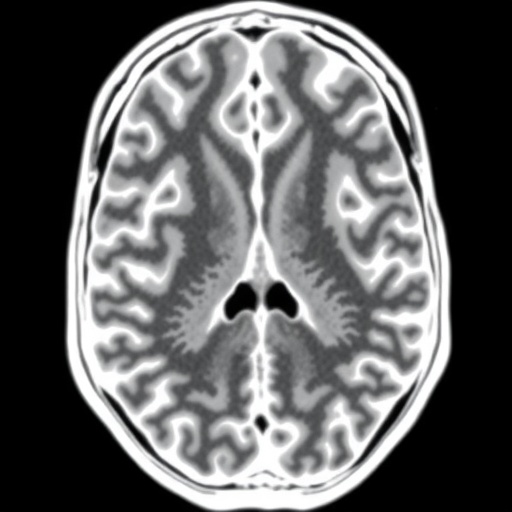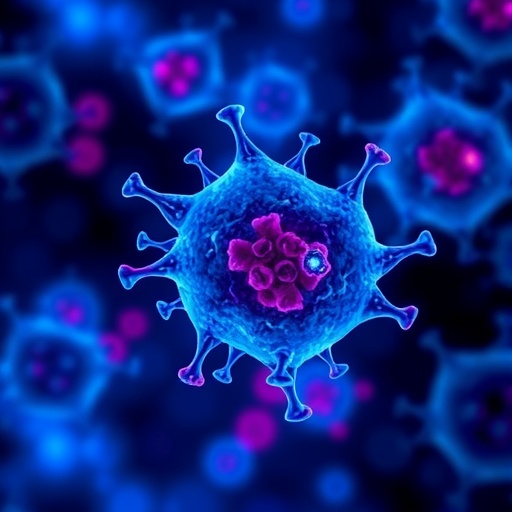In a groundbreaking new study published in BMC Cancer, researchers have unveiled critical insights into the role of DNA polymerase delta subunit 3 (POLD3) in low-grade glioma (LGG), a prevalent form of primary brain tumor with significant potential for malignant progression to glioblastoma. The investigation, which combined comprehensive bioinformatics analyses with rigorous experimental models, highlights POLD3 as a pivotal molecular driver that influences tumor growth, immune landscape, and patient survival outcomes. This multifaceted research embodies a promising leap towards novel diagnostic and therapeutic strategies for LGG, a field that urgently demands innovative approaches due to the aggressive nature and treatment-resistant progression of these tumors.
Low-grade gliomas represent a heterogeneous group of brain tumors characterized by their origin in glial cells and variable clinical behavior. The progression from LGG to glioblastoma, one of the most lethal brain cancers, underscores the importance of elucidating molecular mechanisms underpinning tumor evolution and resistance. DNA damage repair pathways have long been implicated in glioma biology, influencing tumor cell survival and genetic stability. Central to these processes is the DNA polymerase δ complex, essential for DNA replication and repair. Among its components, POLD3 plays a unique role, yet its implications in LGG have remained poorly understood until now.
Harnessing data from multiple high-profile cancer research consortia such as The Cancer Genome Atlas (TCGA), the Chinese Glioma Genome Atlas (CGGA), and the Tumor Immune Estimation Resource (TIMER), the research team embarked on a meticulous investigation into the expression patterns and clinical correlations of POLD3 in LGG. Bioinformatics analyses leveraged vast datasets encompassing RNA sequencing profiles and clinical annotations from nearly a thousand LGG patients collectively, enabling an unprecedented exploration of POLD3’s influence on tumor biology. These computational approaches identified a robust overexpression of POLD3 in LGG tissues compared to normal brain samples, a finding that set the stage for functional validation.
Critically, POLD3 expression levels were found to correlate strongly with distinct clinicopathological features, suggesting that POLD3 might not only serve as a biomarker for disease classification but also reflect underlying tumor aggression. Patients exhibiting high POLD3 expression suffered poorer prognosis, confirming its potential as an adverse survival indicator. Through gene set enrichment analysis (GSEA), pathways associated with cell cycle progression, DNA repair, and immune modulation were significantly enriched in POLD3-high tumors, emphasizing its multifaceted role in tumor pathophysiology.
Recognizing the compelling bioinformatics wields, the researchers advanced to experimental investigations using both cellular and in vivo animal models to dissect the mechanistic contributions of POLD3. RNA interference-mediated knockdown of POLD3 in LGG cell lines curtailed cellular proliferation and invasive capacity, affirming its role in fostering tumor growth and metastasis. Additionally, POLD3 suppression altered the tumor microenvironment by modulating immune cell infiltration patterns, particularly influencing the abundance and activity of tumor-associated macrophages and cytotoxic T cells. These observations illuminate the dual oncogenic roles of POLD3—in promoting tumor intrinsically and sculpting an immune milieu conducive to tumor evasion.
The study’s exploration into immune landscape alterations in LGG associated with POLD3 overexpression stands out as particularly transformative. Modern oncology increasingly acknowledges that therapeutic success hinges not merely on targeting cancer cells but also on reprogramming the tumor microenvironment. Here, POLD3 emerges as a previously unappreciated molecular nexus between genome stability mechanisms and immune system engagement. By influencing both tumor-intrinsic and extrinsic factors, POLD3 may undermine immune surveillance, thus facilitating tumor persistence and progression.
From a therapeutic standpoint, targeting POLD3 offers an innovative strategy that could disrupt tumor DNA replication fidelity, attenuate repair machinery, and modify immune responses simultaneously. Considering the limited efficacy of current LGG interventions and the devastating outcomes following malignant transformation, POLD3-directed therapies could dramatically alter patient trajectories. Furthermore, given the central role of the DNA polymerase δ complex in normal cellular function, selective inhibition strategies must carefully calibrate targeting to minimize collateral damage, highlighting a critical avenue for future drug design and clinical trials.
This research contributes significantly to the molecular oncology landscape by expanding the understanding of LGG pathogenesis through the lens of DNA repair and immune modulation, fields that have often been studied independently. The integration of multi-omics data with functional validations underscores how interdisciplinary approaches can uncover novel tumor vulnerabilities. The establishment of POLD3 as a critical molecular determinant opens doors to refined diagnostics, where POLD3 expression levels might stratify patient risk and guide personalized therapy.
Moreover, these findings catalyze a shift in conceptual frameworks surrounding LGG management. No longer is DNA repair machinery viewed solely as a guardian against genomic instability; it also acts as a dynamic regulator of tumor behavior and immune interactions. As such, POLD3’s multifaceted impact encapsulates the complex interplay between genetic integrity and immune escape that tumors exploit, highlighting the promise of holistic therapeutic interventions.
As the global scientific community advances towards precision medicine, the identification of POLD3’s role in LGG exemplifies how deep molecular insights translate to clinical potential. Future research will undoubtedly focus on dissecting the structural and biochemical nuances of POLD3 within the DNA polymerase δ complex and its crosstalk with immune effectors. Such endeavors will inform the development of agents capable of manipulating POLD3 activity with high specificity.
Beyond its immediate implications for glioma, the study raises intriguing questions about the broader role of DNA polymerase subunits in various cancers, prompting investigations into whether similar mechanisms operate across tumor types. The cross-talk between DNA replication fidelity and immune microenvironment modulation represents a fertile territory for research, integrating molecular biology, immunology, and therapeutic innovation.
In conclusion, the comprehensive work led by Yang, Dou, Wang, and colleagues delivers a compelling narrative on POLD3’s central role in LGG progression, melding bioinformatics and experimental evidence into a cohesive discovery. Their findings illuminate a path forward for improving diagnostics, tailoring treatment regimens, and ultimately enhancing patient survival. As the oncology field embraces molecularly targeted paradigms, POLD3 stands as a beacon of hope and opportunity, inspiring continued exploration into the intricate biology of cancer.
Subject of Research: DNA polymerase delta subunit 3 (POLD3) function and knockdown effects in low-grade glioma (LGG)
Article Title: POLD3 knockdown effects on low-grade glioma: insights from bioinformatics and experimental validation
Article References:
Yang, Z., Dou, Z., Wang, H. et al. POLD3 knockdown effects on low-grade glioma: insights from bioinformatics and experimental validation. BMC Cancer 25, 1489 (2025). https://doi.org/10.1186/s12885-025-14934-y
Image Credits: Scienmag.com
DOI: https://doi.org/10.1186/s12885-025-14934-y





